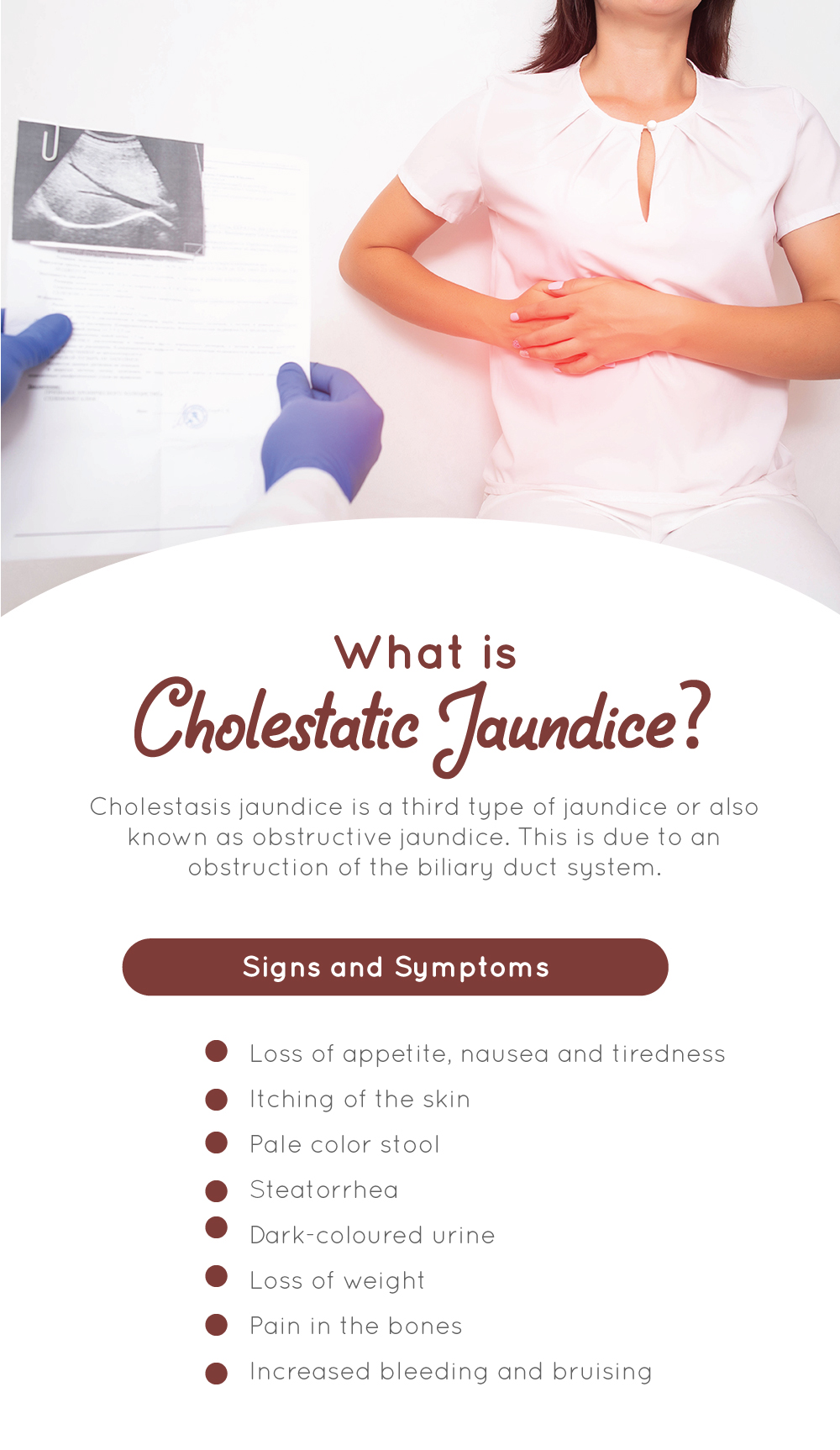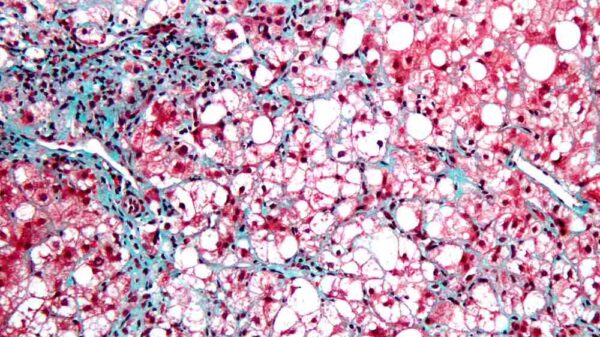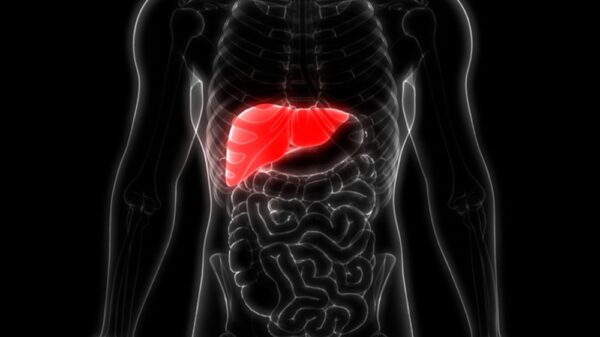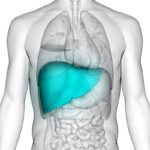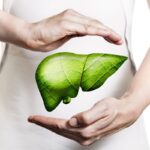So there are chances that you’ve heard about jaundice before. Jaundice is actually a common condition. It could happen in newborns, children, and adults. This is actually a condition wherein there is too much bilirubin in the blood. When you see a person with jaundice the distinguishing sign is the yellowing of the skin and sclera of the eyes. The reason why it’s yellow and not any other color is because bilirubin is a yellow pigment. There are actually different types of jaundice. But for today we will just be looking at cholestatic jaundice.
So what is bilirubin? Well, this is a pigment that is produced by the breaking down of hemoglobin. Hemoglobin is the iron-containing component of blood that carries oxygen. The normal passage of bilirubin from the bloodstream into the liver. Then it goes into the bile duct. The job of the ducts is to actually carry it into the small intestine. That way it can be eliminated. But when there is a problem with any of these organs it would lead to the accumulation of bilirubin and it would then lead to jaundice. And jaundice is associated with so many signs and symptoms as well as risks. Let’s take a look at what cholestatic jaundice is all about.
What is Cholestatic Jaundice?
Cholestasis is actually a Greek word. And this Greek word means to stop or slow down the movement of bile from the liver to the small intestine. And this is actually due to an obstruction of the biliary duct system. The biliary duct is what connects the liver to the small intestine. Since there is obstruction it causes the accumulation of bile in the liver. That’s why this is known to be a type of obstructive jaundice.
Let’s take a look at the normal flow of bile from the liver into the small intestine.
As mentioned before the bile ducts do the job of transferring bile from the liver into the small intestine. The intrahepatic ducts come together and exit the liver. As they exit the liver it becomes the right and left hepatic ducts.
These two come together and then forms the common hepatic duct.
After that, the common hepatic duct joins the cystic duct and this forms the common bile duct.
Bile is actually very important in the body. It helps in the digestion of fat in the small intestine. And when there is a problem with the excretion of bile there is a problem with this function.
Jaundice happens to be one of the most discernible symptoms that come with Cholestasis. The thing though is that it may not be the first symptom to be noticed.
When jaundice occurs in cholestasis, it’s due to acute or acute-on-chronic cases.
Causes and Risk Factors of Cholestatic Jaundice
For children and adults, there are different causes of cholestatic jaundice.
Let’s take a look at some of the causes of cholestatic jaundice in infants.
- Tyrosinemia
- Congenital hypopituitarism
- Bile acid synthesis disorders
- Adrenal insufficiency
- Galactosemia
- Rare genetic disorders
- Biliary atresia
- Bacterial sepsis
For adults, there are extrinsic and intrinsic factors that would affect the function of the liver and cause cholestatic jaundice.
- Infections such as autoimmune cholangitis, viral hepatitis, syphilis, rubella, toxoplasmosis, herpes virus
- Structural conditions such as choledocholithiasis
- Medications like estrogen, cimetidine, erythromycin, nitrofurantoin, gold salts stations, sulindac
- Surgical complications associated with biliary ducts
- 3rd trimester of pregnancy
- Graft-versus-host disease
- Cystic fibrosis
- Tumors
There are also risk factors that increase the risk of having cholestatic jaundice. During diagnosis associating the risk factors would help in finding out what triggered the condition.
- Alcohol
- Medications such as estrogens, Itraconazole, NSAIDs, erythromycin, Cimetidine and alcohol
- Premature babies
- History of liver disease
- Pregnancy
Signs and Symptoms
So jaundice happens to be one of the symptoms that come with cholestasis. But there are many other symptoms that can accompany this condition. And they are:
- Loss of appetite, nausea, and tiredness: This is actually due to liver disease
- Itching of the skin: This is also called pruritus and this is caused by bile products being deposited in the skin
- Pale color stools: As you may already know, bilirubin is a yellow pigment; when bile and the pigments don’t get to the intestine it causes paleness of stool
- Steatorrhea: This is due to undigested fats present in the stools
- Dark-colored urine: This is caused by the decreased accumulation of pigments in the urine
- Loss of weight: This is as a result of impaired digestion
- Pain in the bones: This is due to vitamin D deficiency and also calcium deficiency; these two nutrients are actually important for strong bones
- Increased bleeding and bruising: In this type of jaundice there is decreased absorption of vitamins that are fat-soluble; one of the fat-soluble vitamins is vitamin K which is important for clotting
Treatment of Cholestatic Jaundice
In treating this condition you must take into consideration the cause of the condition. Once the cause is known, then treating it becomes a lot easier.
Let’s take a look at some of the conditions and what you can use in treating them.
- Autoimmune cholangitis: For treating this you can opt for corticosteroids, while bacterial cholangitis can be treated with antibiotics
- Supplements for vitamin K and D can be taken
- Surgery can be used for treating extrahepatic blocks
- If the cause is adrenal insufficiency then glucocorticoids can be used in treating cholestatic jaundice.
So there you have it. Everything you need to know about this condition. If you notice that the symptoms listed above correlate to the symptoms you have then go see a doctor. And when you go see a doctor make sure you follow whatever treatment method is offered. For different people, the treatment method would vary. Just make sure you stick to what your doctor says. This is to ensure fast recovery from the condition.
Now that you know all these about this condition, dealing with it wouldn’t be much of a problem. And just in case things seem to get worse after you opt for the treatment method make sure you inform your doctor.
